Table of content
In today’s hyper-competitive market, well-designed and executed brand awareness strategies are essential for successful marketing efforts. Most companies can’t afford big LED billboards in Times Square, but they don’t want to be just another name in their crowded sectors either. Standing out means building trust, increasing profits, and showcasing reliability among consumers.
At tribe47, we understand how significant brand awareness campaigns can be for recognition. We are also aware that how such campaigns are performed depends on various factors, including the size of the company, available resources, and the location of the business. In this article, we explore strategies dedicated to big brands, mid-size companies, and local or niche businesses.
If you want to explore this topic in the video form, watch the session below:
The Essence of Brand Awareness
Brand awareness goes beyond simple recognition. It’s about fostering deep connections with the target audience. During the E-Commerce Growth Meetup event, Liliana Chepil mentioned an interesting point of view: she asked the audience to imagine a person who forgets names. We usually know at least one friend who needs to meet someone multiple times before they remember them. Brands have to consider such customers daily – in times of informational chaos, it’s easy to forget about companies, too.
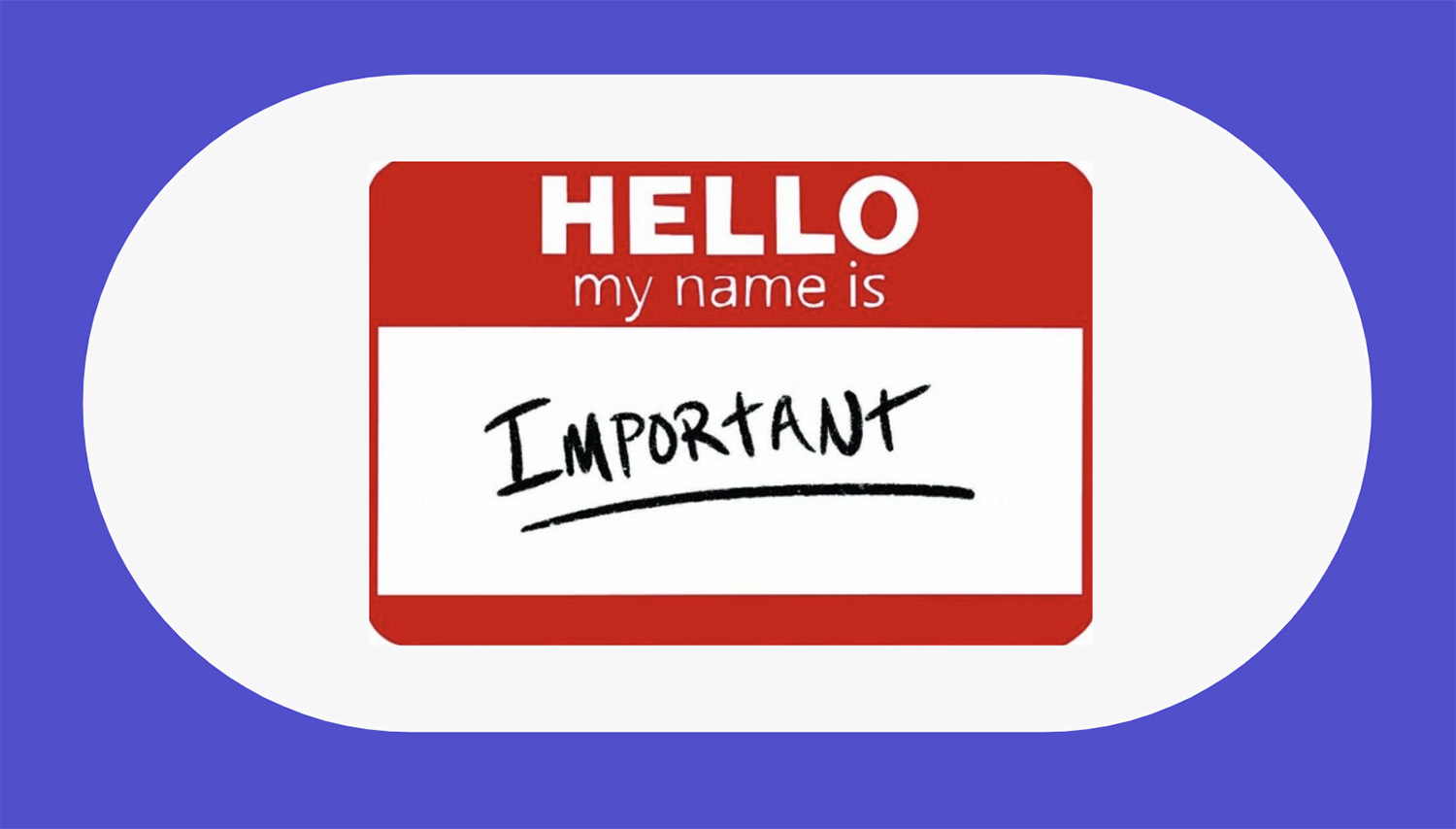
So how can brands sign their names across their audience’s consciousness? Through repetition. The first impression is important, but without appearing several times in front of the consumer’s eyes, it’s impossible to be remembered long-term. Becoming a top-of-mind brand when thinking about certain products (soda – Coca-Cola, sneakers – Adidas, fries – McDonald’s) is the ultimate goal of brand awareness efforts. However, it’s not necessary to achieve success.
Why Do Brands Need Awareness?
The reason why brands should invest in awareness campaigns solely comes from their size and current market situation.
- Big corporations – their target audiences are broad and less detailed. They create a need for their product instead of offering a remedy for a specific problem. Instead of quick profit, they focus on building a lasting impression and appeal.
- Mid-sized organizations – They care about revenue and return on ad spend (ROAS). Such companies are not afraid to invest in activities that cover both the top and bottom of the funnel. Their goal is to reach out to a few target groups (categorized by age, location, income, or lifestyle) because their product can be useful in several situations.
- Niche/local brands – they communicate with narrow groups with particular interests or needs. Such brands want to boost their marketing and sales activities, and they often rely on word-of-mouth, collaborations, or pop-up events.
While Coca-Cola estimates that their logo is recognized by 94% of the global population, smaller companies don’t need such fame because they have concrete business goals focused on smaller markets. It’s easier for them to build awareness within one country, region, or city than to promote their services everywhere.
How Do Different Companies Advertise?
The analysis of various companies’ advertising approaches is crucial to understanding their capabilities and goals better. It can also be used as a source of inspiration and lessons learned when designing new campaigns.
Big Brands
With enormous budgets at their disposal, large businesses can design highly creative, sometimes extravagant campaigns that leave a lasting impression. They can invest in Super Bowl commercials, orchestrate viral content for social media, and organize events with top celebrities and influencers. Their mediums of choice include radio, TV, outdoors, and digital space. They also can curate PR stunts and quickly react to worldwide events or crises.
What’s crucial about these corporations is that they often focus on the ad’s form, not placement (or play with placements as it was the form as well). They want to showcase original ideas and provide a one-of-a-kind experience. That’s why they often use storytelling to inspire, showcase brand values, discuss important matters, or present something atypical.
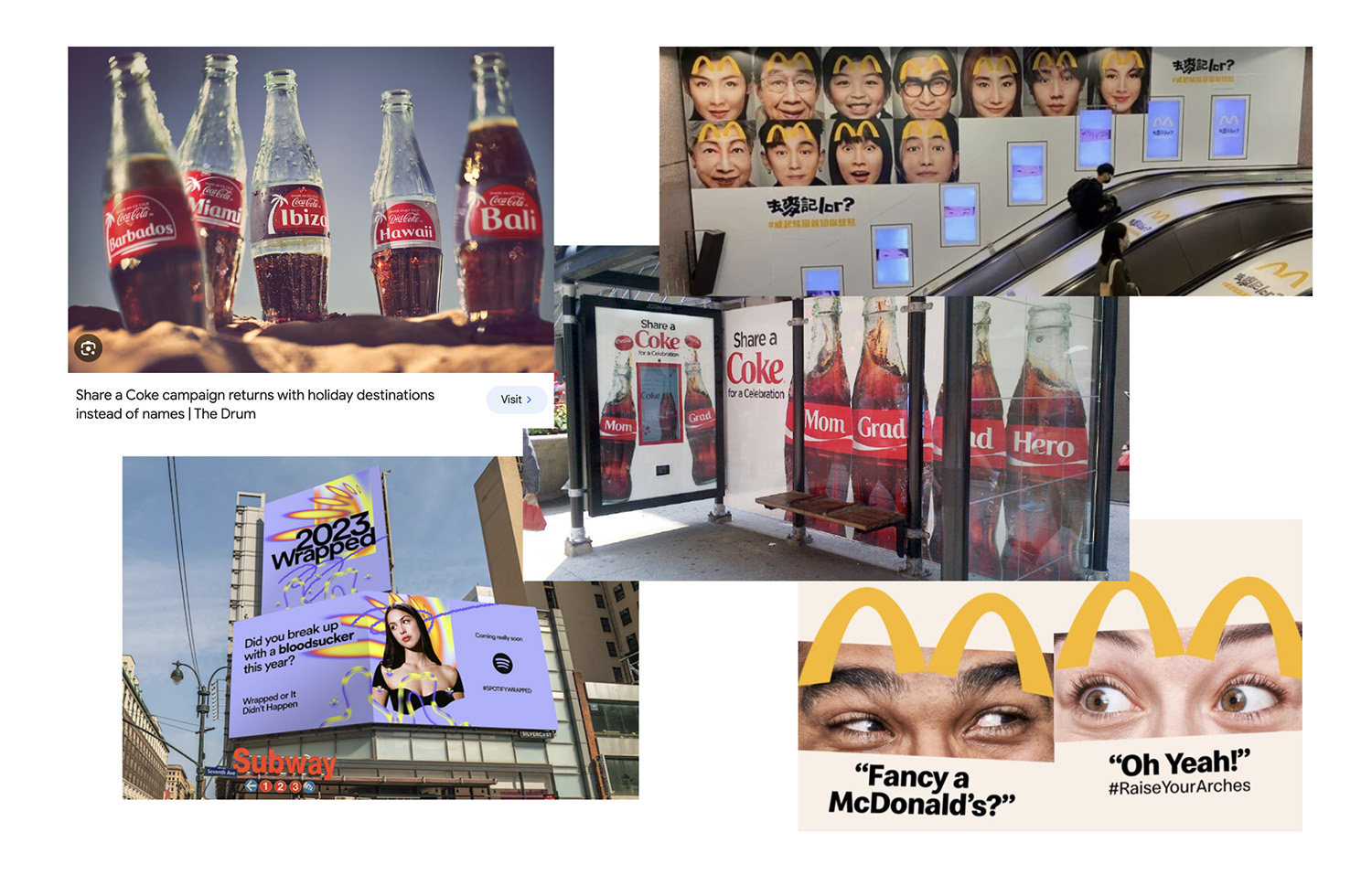
Instead of using direct CTAs, they prepare dedicated, memorable campaign taglines. It’s all about creating a cultural phenomenon that transcends mere marketing.
Mid-size Brands
Thanks to dedicated advertising budgets, they can run elaborate campaigns. Nonetheless, they focus mostly on the digital space and sometimes invest in additional TV, radio, or outdoor ads, especially if they operate in a seasonal model. Marketing is focused on various types of activities – from organic content to paid promotion and collaborations with influencers.
The main objectives behind all of their activities are to spark an interest in their brand and explain how it can change the lives of their ideal customers. Thus, their campaigns often connect awareness and sales efforts – either simultaneously or by dividing efforts into parts. Due to competition, they often have to make fast and smart decisions to convince their audience that they should buy their product or service.
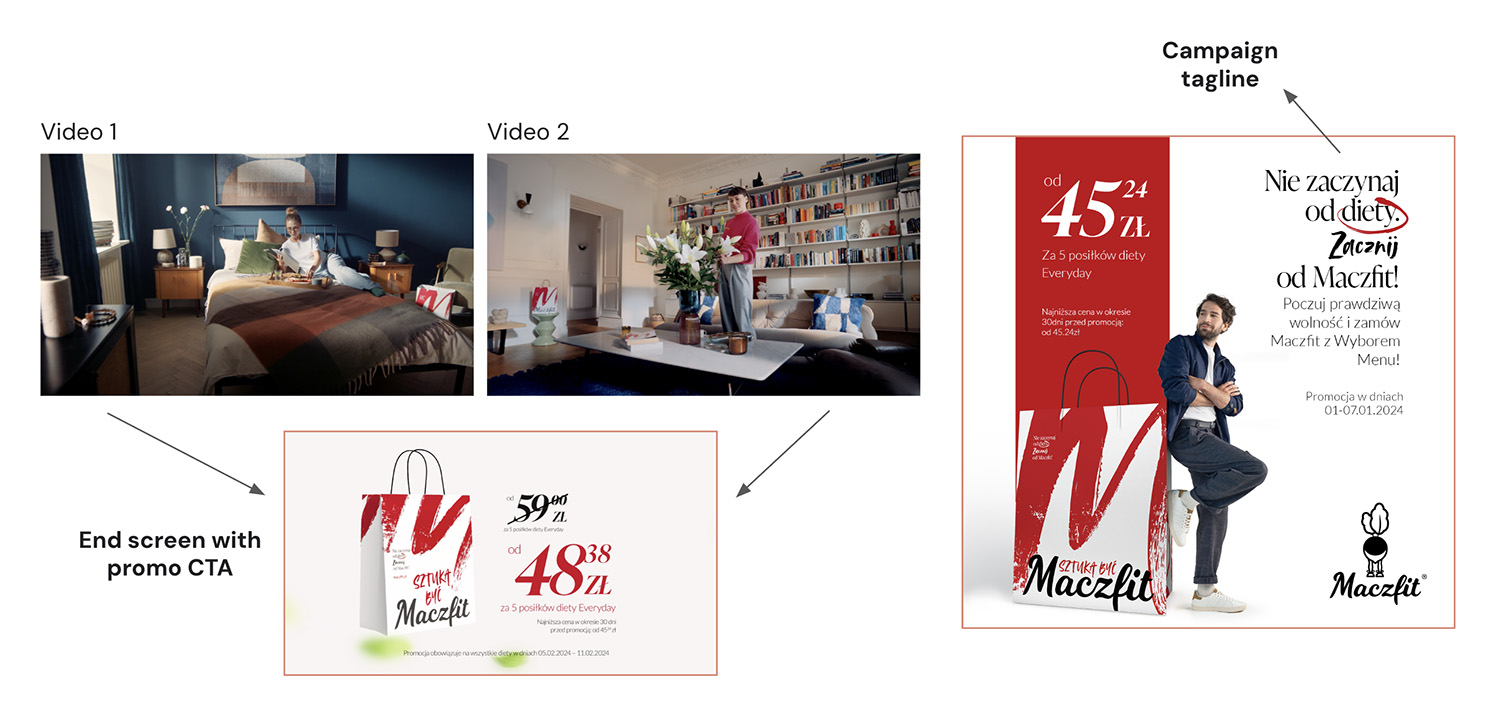
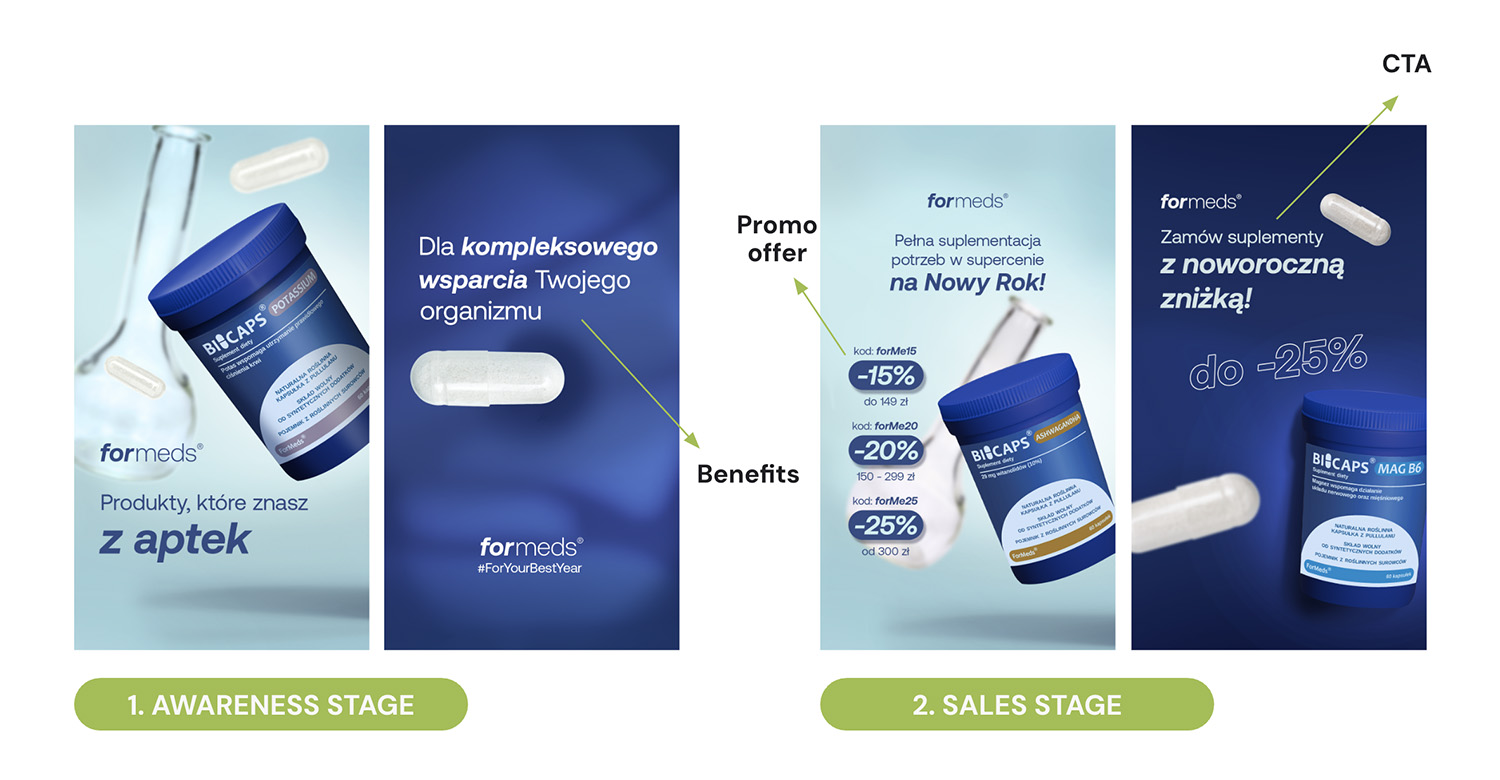
Local and Niche Brands
Small businesses usually have limited budgets, so they rely on less expensive methods of gaining social proof and spreading the word about their products or services. Besides digital activities, especially organic ones, they encourage customers to recommend them to their peers. Additionally, they often participate in collaborations with third-party entities, appear as guests on blogs and podcasts, offer free samples, and look for sponsorships.
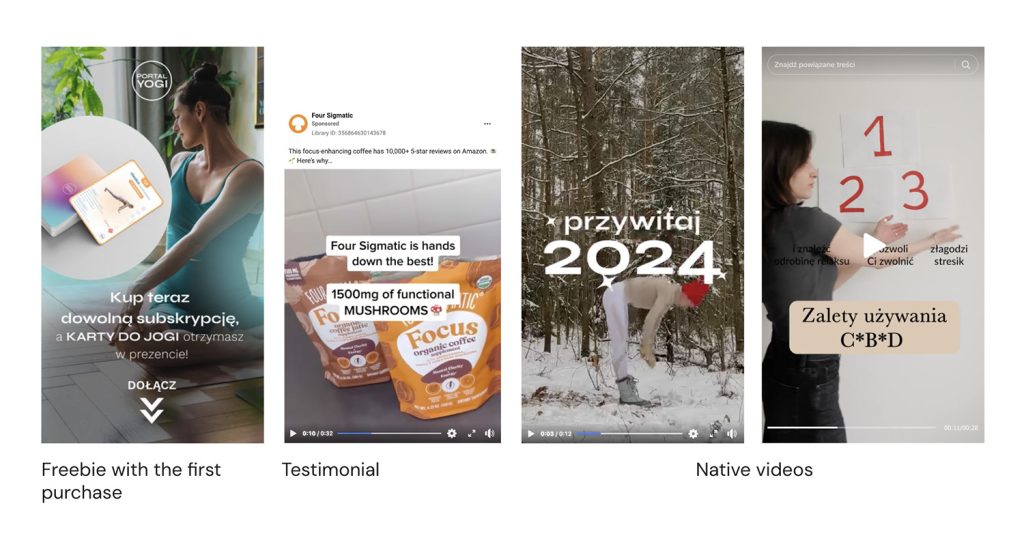
Building credibility should be the main focus at that stage of business; that’s why sales usually happen thanks to testimonials, reviews, referrals, and value-driven content. Posting native, organic posts boosted by ads is considered the best strategy to increase visibility, reach the target audience, and promote the offer.
Integrating Brand Awareness into the Media Mix
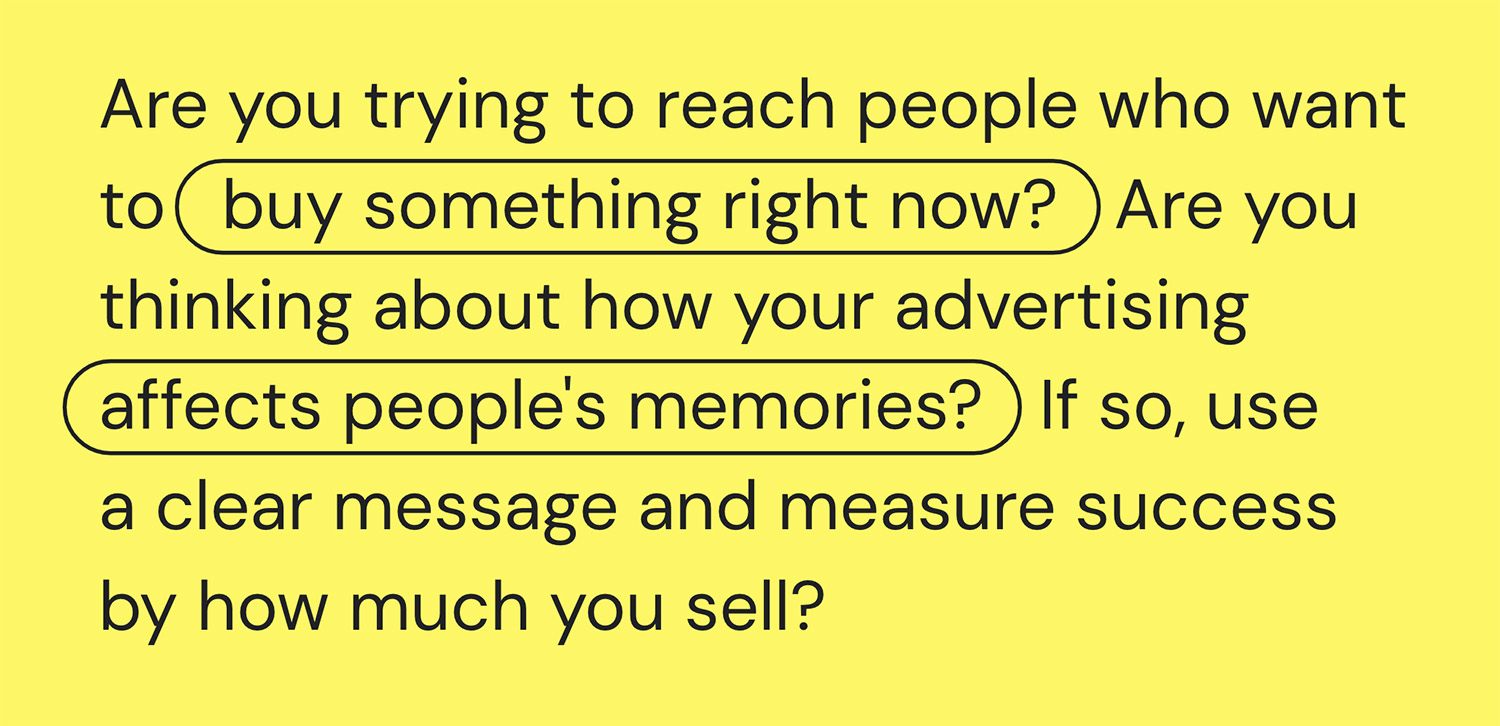
Navigating the labyrinth of media channels requires a strategic approach tailored according to unique business objectives. Big brands can cast a wide net and catch a lot of attention by saturating every available platform with their message. Mid-size companies adopt a more focused approach, allocating resources to channels that promise the highest return on investment. Niche and local brands, on the other hand, embrace tactics highly specific to their area of expertise and operation, leveraging community events, partnerships, and word-of-mouth marketing to mark their presence.
Where to Advertise for Brand Awareness?
Social media and Google prove to be useful for brands of all sizes when it comes to raising brand awareness. What types of campaigns are worth trying for this specific goal.
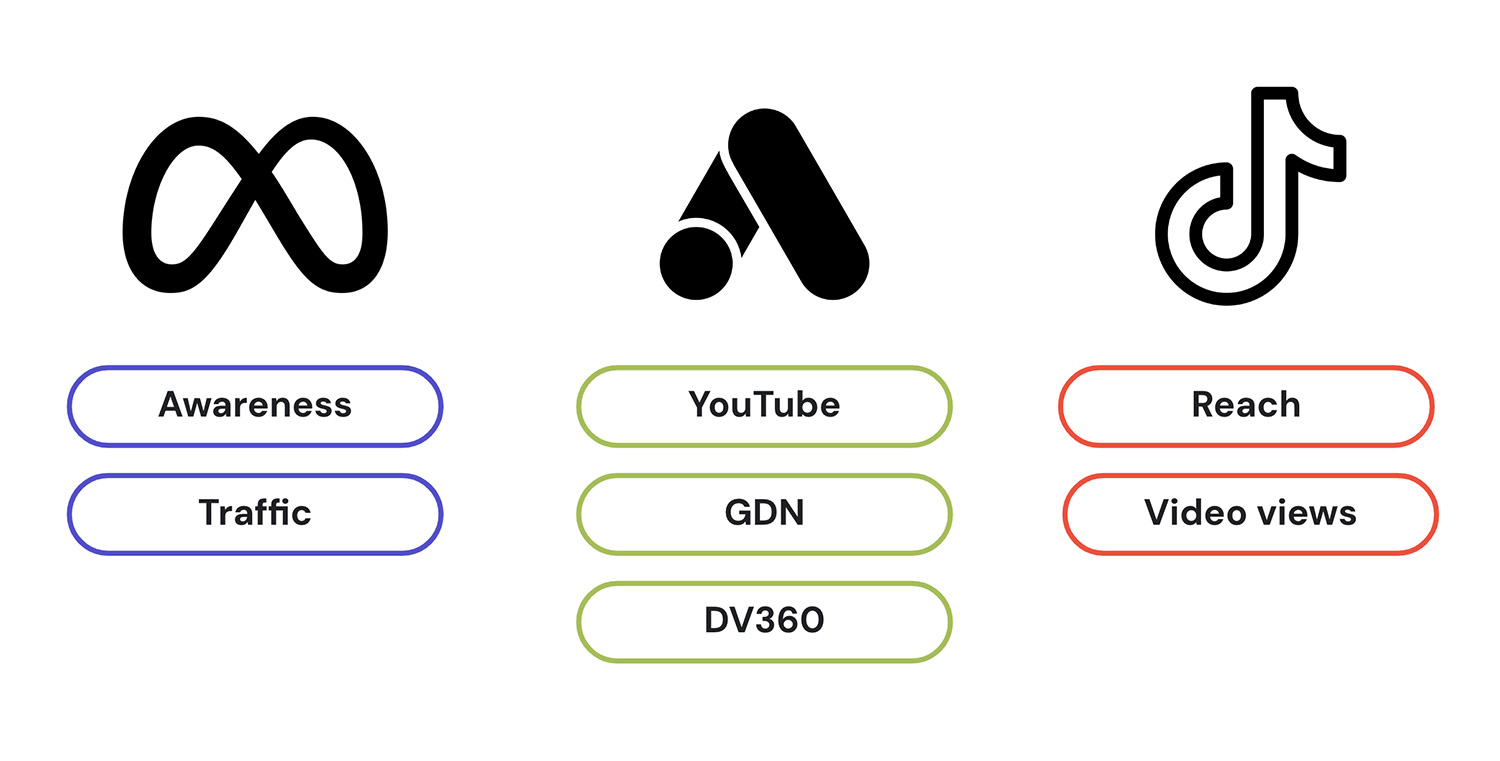
These types of ads will increase the number of potential customers to get in touch with the brand and drive traffic to its website. However, for organizations of different sizes, it will work slightly differently.
Large players will experience more sales in brick-and-mortar stores due to their growing popularity. Their campaigns are usually dedicated to the consumer’s consideration stage. The higher the frequency of the ads, the more they are imprinted in people’s minds, which changes the decision-making processes.
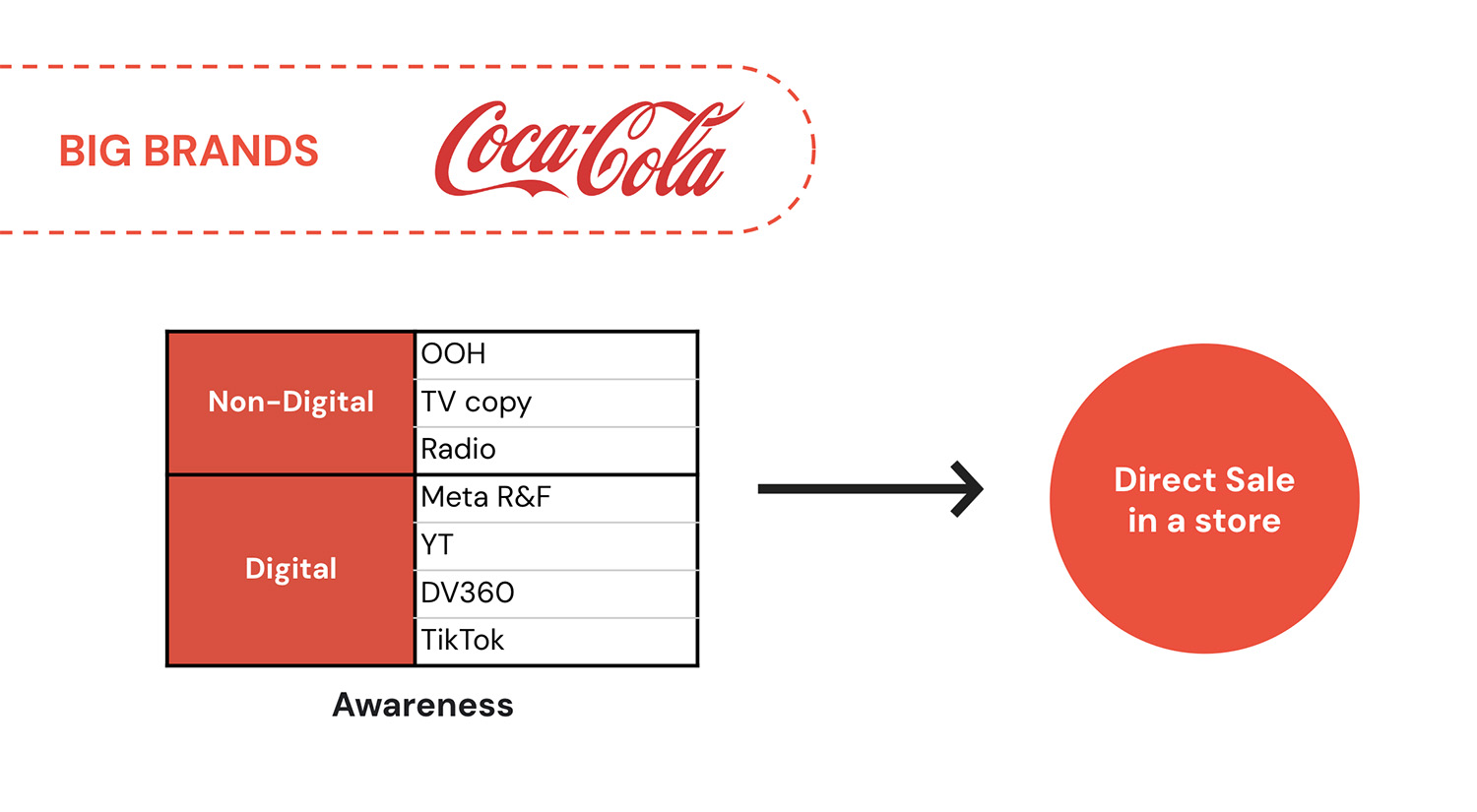
For mid-size brands and smaller businesses, digital marketing might at first result in app installation, social media following, or more website visitors. They increase the warm group of leads and thanks to remarketing, this audience can be converted into buyers. It’s worth noting here that for these organizations, awareness campaigns should last longer than a month to produce satisfying results.
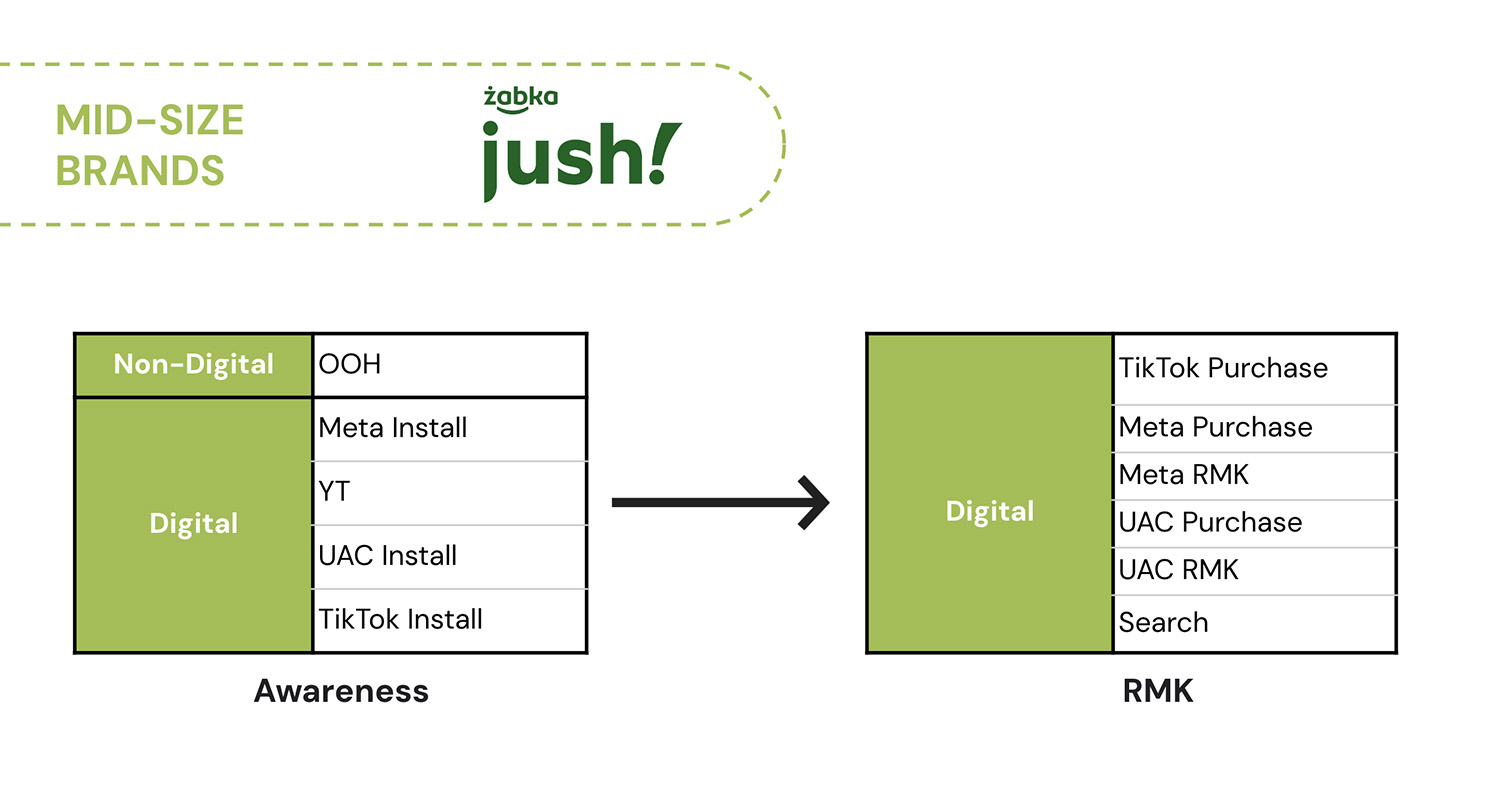
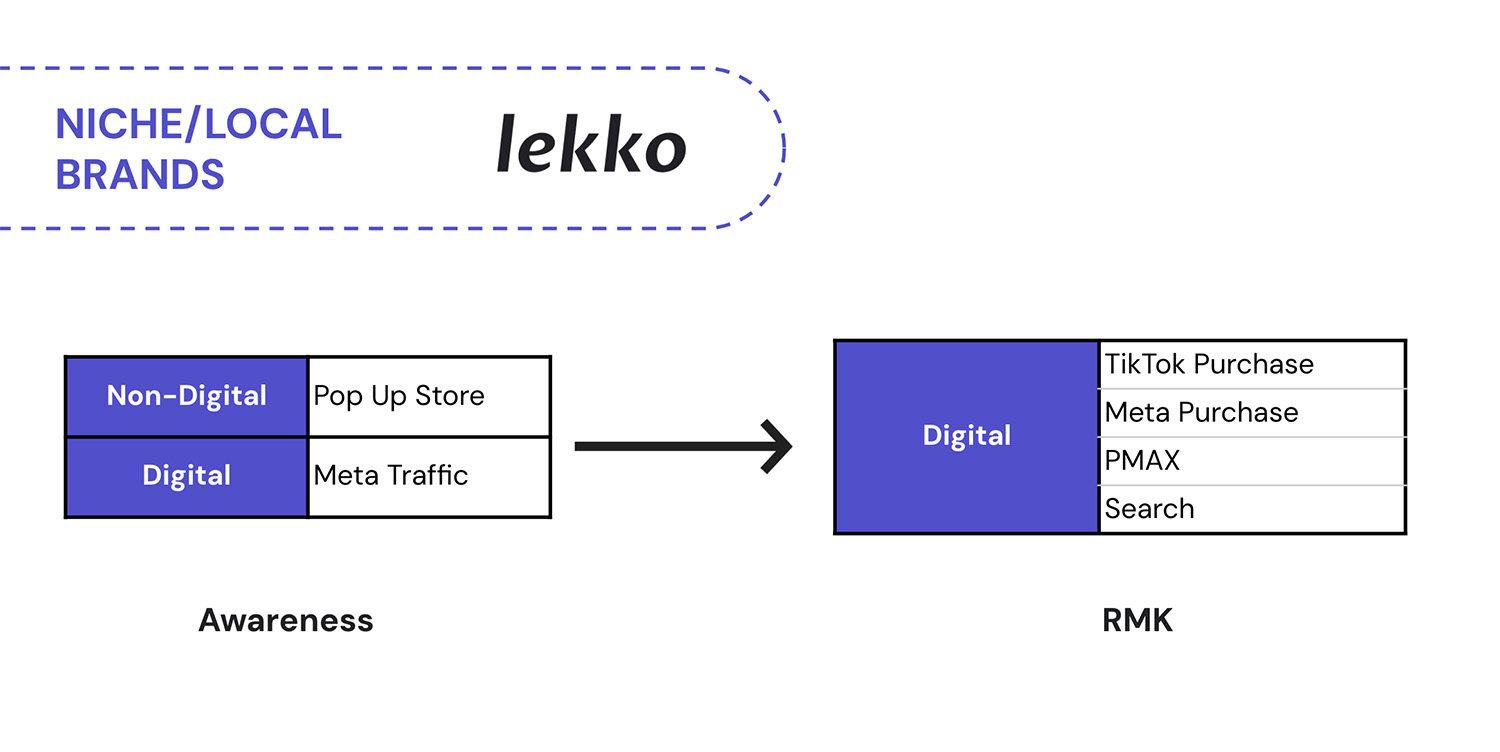
Measuring the Impact of Brand Awareness Campaigns
Quantifying the success of brand awareness campaigns is not easy – yet, it’s essential for refining strategies and optimizing future efforts. Furthermore, metrics that should be taken into consideration are different from the ones monitored for sales ads. Which methodologies and tools can be useful in this case?
- Social listening: Using apps like Brand 24, BrandWatch, or YouScan is the best way to find and analyze conversations about the brand. Businesses can actively engage with their audience and manage their reputation.
- Traffic statistics: Knowing how many people type the website address into their browser without clicking links is an excellent indicator of increasing brand awareness.
- Surveys: Providing questionnaires about the organization allows it to collect useful insights about its image among the audience.
- Media metrics: click-through rate, video views (for awareness campaigns), conversion rate, cost per acquisition, and size of the group (for warm leads campaigns).
Being aware of how brand awareness is growing at all times enables brands of all sizes to tweak their activities and find out which ones bring the best possible results.
So, does the size of the company matter when preparing and executing brand awareness campaigns? Definitely. The goals are similar, but the differences in budgets and other factors influence how businesses can get more eyes on them. It’s important to remember that strategic awareness building can lead to growth and higher revenue. This unlocks the potential for increasing the knowledge about your brand even more. At tribe47, we can help your organization thrive within your industry and area of choice – reach out to us, and we will help you with marketing campaigns dedicated to this goal.




